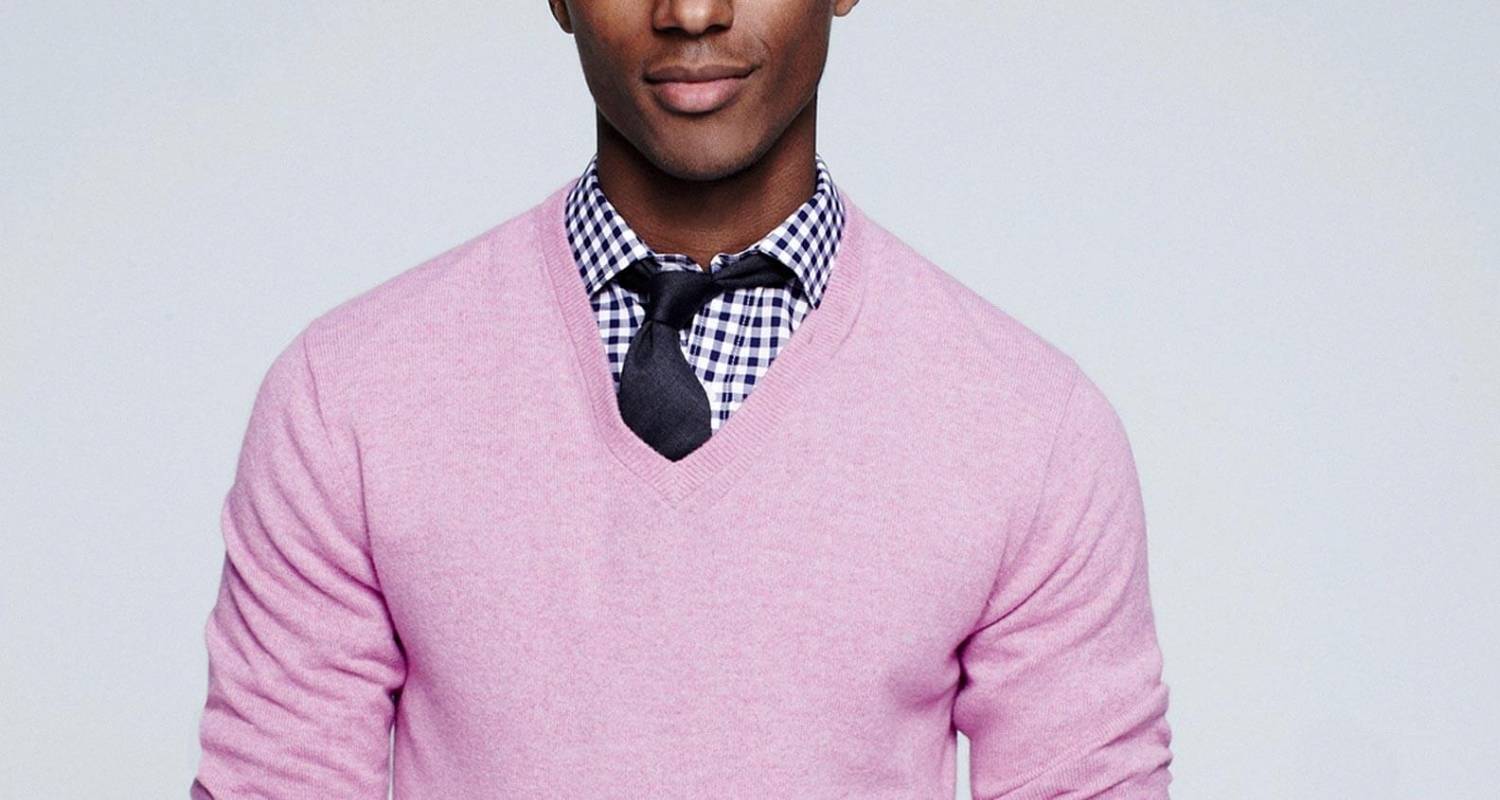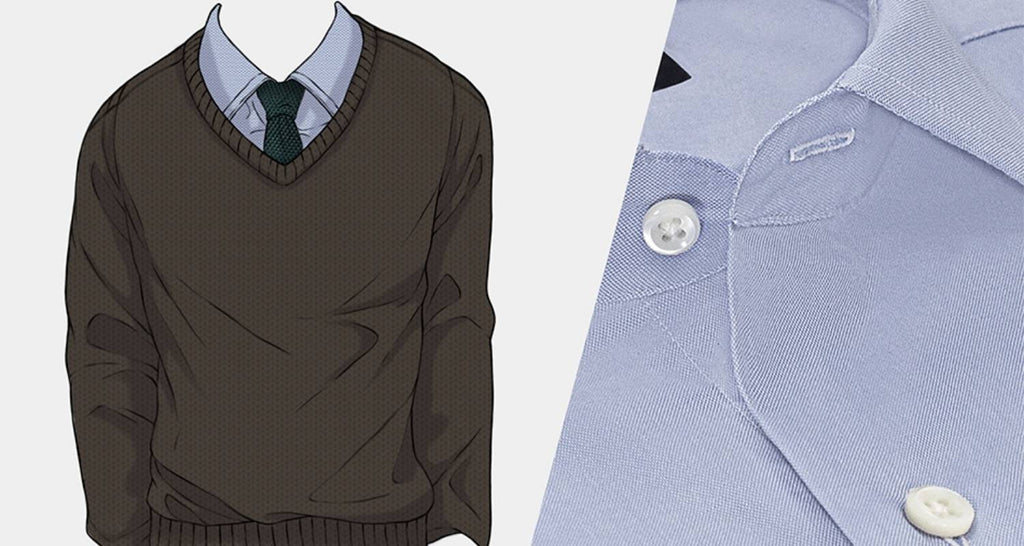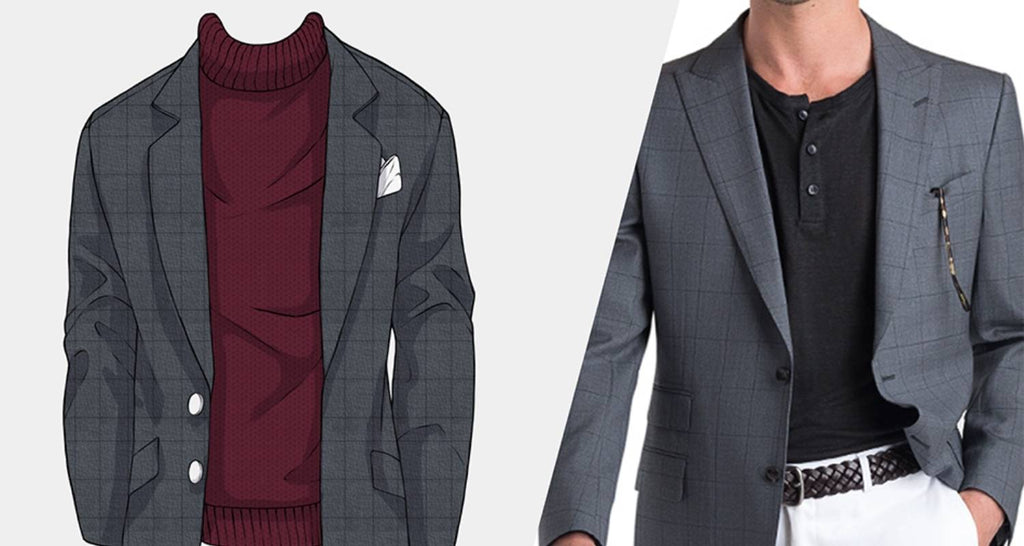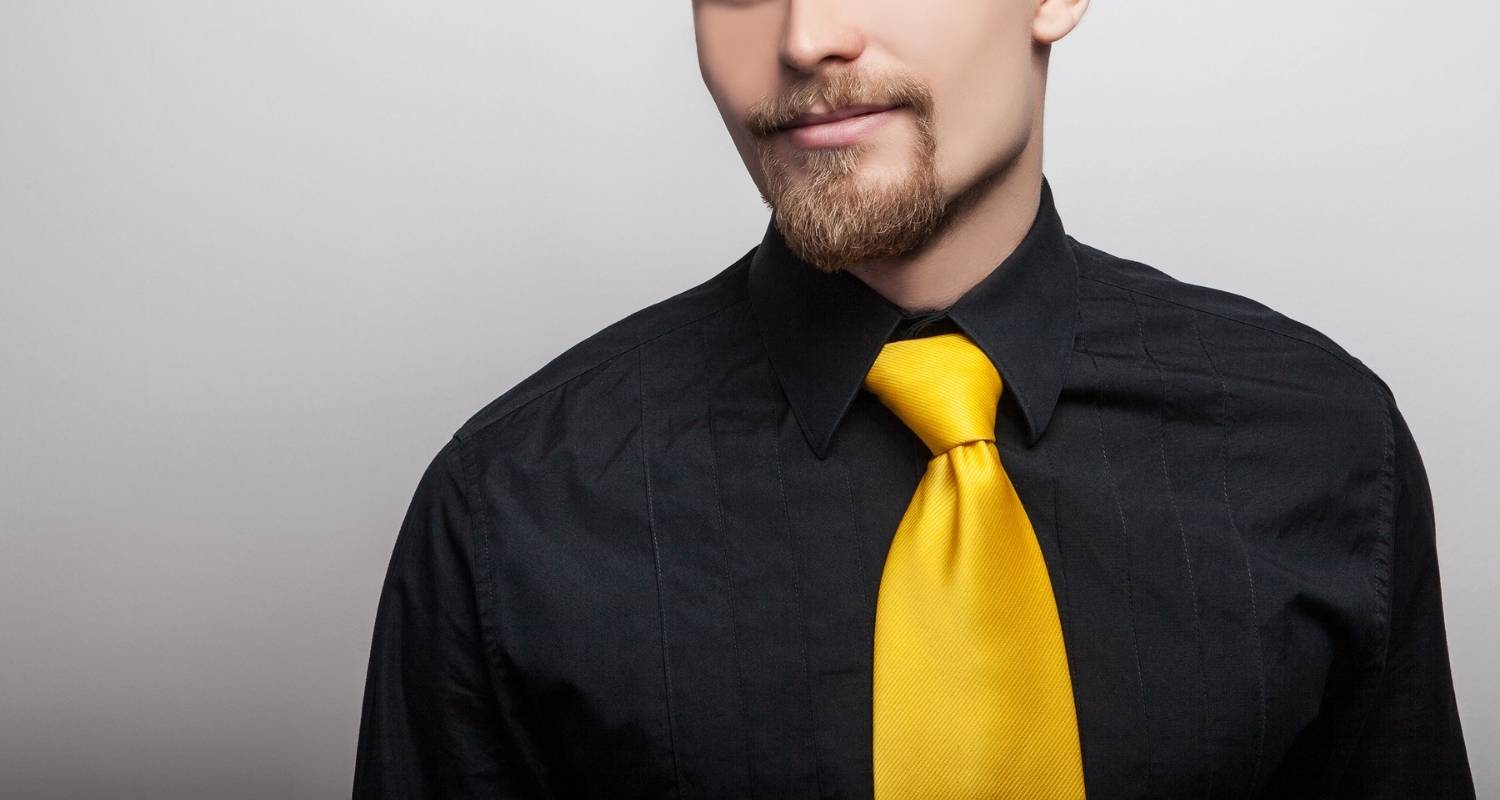Your basket is empty

This applies to the classic fall duo of sweaters and shirts . On its own, a shirt or sweater can definitely work independently. However, when you put them together, you form a style powerhouse that takes the best qualities of both.
Psychology lesson aside, creating a layered sweater and shirt combination will not only make you look good, but will keep you warm during the cold fall and winter months. Here's how to pull off the shirt, tie, and sweater combo , from the basics to expert examples.

Wearing a shirt and sweater might seem easy, but there are a few basics you need to know before thinking about wearing this combo.

At your workplace, during an interview or at dinner, you should always tuck in your shirt when wearing it under your sweater . This is the rule, pure and simple. There are occasions when you can wear your shirt untucked, but as soon as you add a sweater, tuck it in
Trust us on this. Having a shirt tail hanging below the hemline of your sweater is just not a good look for anyone.
Oh - and in case you're wondering... never tuck a sweater into your pants , seriously.

When wearing a sweater with a shirt, ties are strictly optional. Let the formality of your surroundings guide you in deciding whether or not to bring out your favorite tie.
The simplest way to think about it is to ask yourself if you would wear a tie for this occasion if you hadn't chosen to add a sweater. If the answer is no, you can probably do without it.
If, on the other hand, you are wearing a suit and the tie is part of your outfit, go ahead and tie it. Just make sure that between your sweater, shirt, and tie, you won't use more than two colors (except neutrals like gray or charcoal).

Even though your shirt will be mostly hidden under a sweater, it should still fit well. If it's baggy, you'll have all kinds of unwanted puckering that will be very visible, especially under a thin, fitted sweater.
Conversely, a baggy, baggy sweater will be just as unflattering. Remember, you're not preparing for an Arctic expedition, so keep most of your layers thin.
And keep in mind that you may want to remove a layer once inside, so make sure each layer is neat, clean, and can stand on its own.

Pairing two neutral shades is the easiest way to create a conservative look for the workplace . In its simplest form, it can be a dark blue V-neck, with a crisp white shirt and straight black tie.
If you want to add a little more formality, you can throw on a nice carbon gray blazer , and you'll look confident.

Mixing solid colors with patterns is a great way to add some energy and personality . The shirt can be a variation of the color of the sweater, or the two can be complementary colors. A good example of color matching would be to wear a plain gray sweater with a wide purple striped shirt.

When it comes to pairing a patterned sweater with a patterned shirt, our advice is to refrain from it altogether . The more patterns you add to your look, the more likely you are to create unattractive contrasts that will be difficult for the eyes to follow.
So, ideally, when layering a shirt with a sweater, stick to one pattern for the best aesthetic result. It can be a striped sweater and a plain shirt or a gingham shirt and a plain sweater, either way you get a simple and clean result.

The collar points of your shirt should always be tucked under the sweater when wearing a crewneck sweater with a tight crew neck.
The most common types of collars (including spread, semi-spread, and point collars) are all easy to tuck in unless your sweater's collar opening is unusually large.
Of course, a buttoned shirt collar like that of a classic Oxford shirt will give you maximum security against missteps.

When pairing a shirt with a V-neck sweater, keep triangles in mind . Traditional collars, such as pointed or semi-spread collars, will sit nicely over a v-neck sweater and require little effort to tuck in.
A V-neck sweater also provides the perfect space for a tie , in keeping with the triangle pattern, so if the formality of where you'll be wearing your outfit demands one, a V-neck sweater is a good choice . If the formality of where you will be wearing this outfit requires it, a V-neck sweater is a good option.

Whether zipped or buttoned, the deeper neckline opening of a cardigan sweater offers the most flexibility. Because you can see more of the shirt, this is where a patterned shirt is most effective when paired with a sweater.
Plus, since many cardigans are solid colors, you'll want to create contrast. A beautiful navy gingham, with or without a tie, goes with almost any sweater color - we'll come back to colors and patterns later.

With its large full collar, the button-down shawl cardigan sweater is actually a great alternative to the blazer in a casual workplace (sorry, businessmen, this isn't for you).
Shawl sweaters give you a lot of leeway when choosing the collar of your shirt, but we advise you to avoid cutouts, as they will stand out too much against the wide shawl neckline.
It's even easier to add a tie, just follow our color rules and tuck it under your sweater. Boom.

This is kind of a "not applicable" category, but we love turtlenecks, so we had to give them some love, even if you can't really wear them with dress shirts.
With a suit, or just jeans and a nice blazer, a turtleneck is a great way to create a whole new look.
Remember to create contrast ; a navy blue suit pairs perfectly with a light gray turtleneck, while a fresco gray check suit will pair perfectly with a deep burgundy sweater.
If you want to know more about this masterful look, we've written a full article on wearing a turtleneck correctly.
Fall may be knocking at the door, but now that you know how to properly layer a sweater and shirt, you shouldn't be afraid. All you have to do is choose your favorite sweater and shirt and sport your new warmed up style.
Comments are approved before publication.


